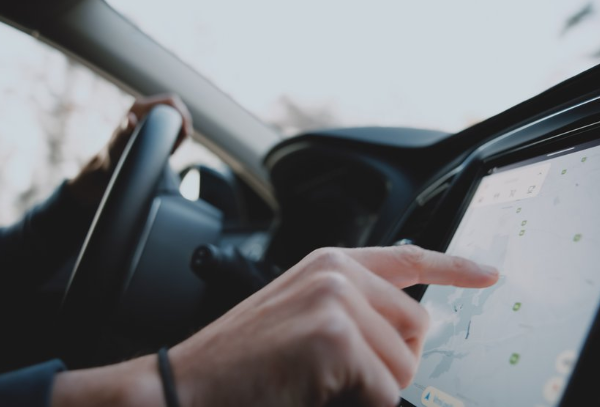
If understanding your auto insurance policy is challenging, you’re not alone. Insurance is a contract, so it has a lot of legal language. But don’t let that scare you.
Once you know where to find the information, you can confidently review and ask questions about your policy. Your insurance agent can help you understand your coverage and increase or decrease it based on your needs. And you can advocate for yourself.
Here are some of the main sections of your auto insurance policy.
Declarations page
The declaration page, or “dec page,” recaps information specific to your auto coverage. It’s the cover page to your insurance agreement, which looks more like a legal document. Every insurance company styles its dec pages differently, so it will be in a different order than here.
The declarations page shows the essentials of your policy, such as:
| Information | What it is |
| Named insured(s) | This is the name of the person or persons who bought the auto policy, or the “policyholder.” The policy covers them. |
| Policy number | This is the number that identifies your auto policy. |
| Policy period | This shows the date your auto policy coverage begins (the “effective date”) and when it ends (the “expiration date”). Some policies list exact times and dates to prevent confusion about coverage. Here are some examples:
|
| Policy written by | This shows the name of your insurance agent and the agency’s contact information. They are the people you contact for questions about your policy. Independent agents don’t work for the insurance company. They work for you. They can sell policies from multiple insurance companies. |
| Underwritten by or loss payee | This shows the name of the insurance company. “Underwritten by” or “loss payee” refers to the insurance company that took on the risk to insure your vehicle and will pay if you have a covered accident or loss. They’re the company you have an insurance contract agreement with. |
| Vehicles covered | This shows a description of the vehicle or vehicles your policy covers. Ensure the details are correct. |
| Discounts | This shows the discounts you’re getting. Discounts are for things like safe driving, safety features in your car, associations or memberships, customer loyalty, etc. |
| Listed drivers | These are people you’ve told the insurance company will regularly drive your car. They do not have to be policyholders to be listed drivers. The insurance company will vet them.
Some insurance companies will not cover anyone other than a policyholder or listed driver. Other insurance companies allow “permissive use” as part of the insurance contract. Permissive use is when you give someone permission to use your vehicle temporarily. Talk to your agent for advice about handling permissive use versus listed drivers. It’s better to err on the side of caution than risk being uninsured because you didn’t follow the rules of your auto policy. |
| Excluded drivers | These are people you’ve told the insurance company will not be driving your vehicle. Talk to your agent about why you might exclude drivers. |
| Coverage | This shows the types of coverage you have on each vehicle. Your insurance contract will be around 20 pages. Find out what it does and doesn’t cover. Ask your insurance agent to explain your coverage options based on how you use your vehicle. (More on this later.) |
| Limits | This shows the coverage limits, or the maximum amount the insurance company will pay in a covered accident. Once you reach the maximum amount, your insurance company will no longer reimburse or defend you. You can buy higher limits of auto insurance or extend your liability protection with a personal umbrella policy.
Many states require minimum coverage on each car. State minimum coverage is usually insufficient for your liability in a serious accident. People can sue you for future wages, take liens against your house and deplete your savings. |
| Deductibles | This shows how much you’ll have to pay out of pocket before the insurance company will pay their share. For example, if you have an accident and the insurance company agrees to pay to repair your car, they’ll explain your options for choosing a repair shop. They’ll work with the auto shop to get an estimate and what they’ll pay to repair your car. |
| Premium | This shows a breakdown for each coverage type selected. |
| Total premium | This shows the total premium and fees associated with your insurance coverage. Your total premium is for the coverage period, usually six months. You can pay it at once or monthly. Ask your agent about discounts for lump-sum payments and other options. |
The rest of the policy consists of your insuring agreement. Your insurance contract is around 20 pages long and lists all the conditions, coverages, limits, exclusions and terms.
A note about insurance cards
Your declarations page is not the same as your insurance card, or “certificate of insurance.” It does not replace the proof you need to show law enforcement or if you’re in an accident. An insurance card is tiny enough to carry in your wallet. Many states have digital wallet options you can keep on your phone.
Every driver should have an insurance card when they drive. If you need to replace your insurance card, log in to your self-service account to download one or contact your agent.
Definitions in your policy
The first section is a statement about the coverage and definitions of terms that will be used throughout the policy.
The definitions section says you and the insurance company agree on the definition of these terms to reduce confusion.
For example, a standard auto policy may define family members in this way: “Family member” means a person related to you by blood, marriage or adoption who is a resident of your household. This includes a ward or foster child.
Your friend of 40 years might be family to you, but your insurance contract would not consider them family using this definition.
Make sure you understand the definitions and seek clarification from your agent.
Liability coverage for damages you cause
This section describes what the insurance company will pay for bodily injury or property damage to others if you’re legally responsible for a car accident. It references the definitions of bodily injury and property damage and who is covered.
Other sections within liability coverage describe:
- Supplementary payments, such as bail bonds
- Exclusions that negate coverage, like business use or intentionally damaging property
- Limits of liability, which is the most the insurance company will pay based on the amount listed on your declarations page
- Out-of-state coverage for when you’re driving outside the state your car is registered in
- Other insurance describes how the payments will be shared if there are multiple insurance providers involved
Here are some of the coverages for other drivers, their passengers and the property in their vehicles:
| Coverage type | What it’s for |
| Bodily injury liability (BI) | BI covers injuries or deaths you cause. BI liability includes medical and legal expenses incurred by the injured party or their estate. It also covers settlements related to the accident. BI only covers up to the limit listed on your declarations page. Any expenses over that amount will become your responsibility. |
| Property damage (PD) | PD pays for damages you cause to someone else’s personal property. PD responds if you’re at fault. It only pays up to the amount listed on your declarations page. |
Medical payments, uninsured motorists and damage to your vehicle
You can get coverage beyond your liability for the damages you cause to others and their property. It can be for yourself, your passengers or your property. Some coverage options depend on where you live.
Here are some of the main coverages for your vehicle, you and your passengers:
| Coverage type | What it’s for |
| Collision coverage | Your lender will require collision coverage if you have a car loan or lease. The coverage limit is the vehicle’s actual cash value, or “ACV” (cost to replace it minus depreciation). Collision coverage pays for the repair or replacement of your car after an accident with other vehicles or fixed objects. It does not cover collisions with animals or theft or vandalism. You need comprehensive coverage for that. |
| Comprehensive coverage | This optional coverage pays for theft or damages not caused by collisions with objects, cars or people. You need comprehensive coverage for fires, floods, vandalism, falling objects and animal impacts. Collision-only coverage will not respond to these accidents. Older vehicles might not benefit from comprehensive coverage if the car’s ACV is very low. You can find your car’s value at Kelley Blue Book and weigh it against the cost of comprehensive insurance. Ask your insurance agent for advice. |
| Medical payments (Med Pay)
|
MedPay pays for injuries or funeral expenses you or your passengers have due to a car accident. It doesn’t matter who’s at fault. |
| Personal injury protection (PIP) | PIP pays for medical expenses and lost wages for you and your passengers. It is often mandatory in states with no-fault insurance. |
| Uninsured/underinsured motorist (UM/UIM) | UM/UIM coverage protects you when other drivers don’t have insurance or don’t have enough. This includes hit-and-run incidents. |
| Guaranteed asset protection (GAP) | GAP coverage is optional. It helps when you owe more on your car loan than the car’s worth. Your insurance company will pay the difference between your car’s ACV and the remainder of your loan. |
| Ridesharing coverage | You’re not automatically covered for ridesharing. Some ridesharing company insurance plans are limited to when you’ve matched with a rider or have a passenger. This creates a liability gap for you. To be fully covered, you need a ridesharing endorsement. It protects you when you’re logged in to a service but waiting for a match. |
Your duties after an accident or loss
This section explains what you must do after a car accident. It also covers what to do in an investigation.
Most policies require you to tell the insurance company about an accident, who got hurt and any witnesses. If it’s a hit-and-run, call the police immediately.
General provisions
This section gives information about things that affect your coverage but don’t relate to the other sections, such as:
- Even if you go bankrupt or die, your insurance company must honor its obligations under the policy.
- Your insurance company can only make changes to your policy by issuing an official note.
- Fraud and false claims aren’t covered.
- Disputes and lawsuits against the insurance company will be handled through arbitration or a court of law, as per the rules, terms, and conditions delineated in the policy.
- The insurance company will pay the lender directly if you have a loan on your vehicle.
- Your insurance company has the right to recover its costs and conduct inspections.
- Your policy doesn’t cover you in Mexico, but it does cover you in Canada and U.S. territories.
- The insurance company has the right to litigate and settle on your behalf, regardless of your agreement with them.
Cancellation and termination
In the final section of your policy, you’ll find how you or the insurer can terminate the contract. There is a formal procedure for breach of contract triggers, like not paying your premium. Finally, the section states when the insurance company must send a renewal notice.
Review your policy with your agent
Call your agent to review your coverage options and clarify questions about your coverage. This information isn’t a substitute for an agent’s expertise, but it can help you understand your driving risks and liabilities.


